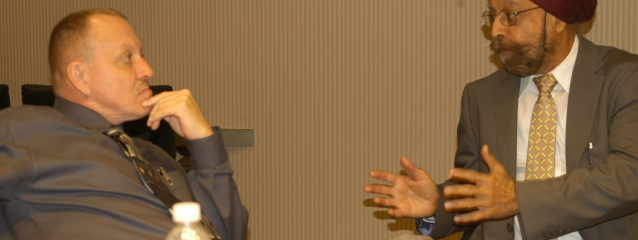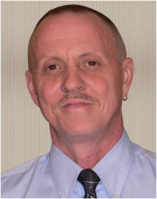
Stevens Johnson Syndrome and Toxic Epidermal Necrolysis
Stevens-Johnson Syndrome and Toxic Epidermal Necrolysis are two variants of the same life-threatening autoimmune reaction that cause acute illness, rash, wide-spread skin slothing
due to massive blistering, internal organ failure and more.
In Stevens-Johnson syndrome, a person has blistering of mucous membranes, typically in the mouth, eyes, and vagina, and patchy areas of rash. In Toxic Epidermal Necrolysis, there is a similar
blistering of mucous membranes, but in addition the entire top layer of the skin (the epidermis) peels off in sheets from large areas of the body.
Both disorders can be life threatening. In Toxic Epidermal Necrolysis, the fluid is literally sucked from the internal organs, the lymph system and the blood and then deposited into
blisters on the top layer of skin. The blisters then burst, exposing the underlying raw skin setting the stage for massive, systemic infection and multi-system internal organ failure.
Nearly all cases are caused by a reaction to a drug, most often sulfa antibiotics; barbiturates, or anticonvulsants. Some cases are caused by a bacterial infection: Occasionally, a cause cannot be
identified. The disorder occurs in all age groups but is more common in people over age 40 people, probably because this age group tends to use more
prescribed drugs.
Stevens-Johnson syndrome and Toxic Epidermal Necrolysis usually begin with fever, headache, cough, and body aches. Then a flat red rash breaks out on the face and trunk, often
spreading later to the rest of the body in an irregular pattern. The areas of rash enlarge and spread, often forming blisters in their center. The skin of the blisters is very loose and easy to rub
off. In Stevens-Johnson syndrome, less than 10% of the body surface is affected.
In Toxic Epidermal Necrolysis, large areas of skin peel off, often with just a gentle touch or pull. In many people with Toxic Epidermal Necrolysis, 30% or more of the body surface
peels away. The affected areas of skin are painful, and the person feels very ill with chills and fever. In some people, the hair and nails fall out. The active stage of rash and skin loss can last
between 1 day and 14 days.
In both disorders, blisters break out on the skin, mucous membranes lining the mouth, throat, anus, genitals and eyes. What makes this condition so devastating is that the internal organs are
blistered as well. The damage to the lining of the mouth makes eating difficult, and closing the mouth may be painful, so the person may drool.
The eyes may become very painful, swell, and become so filled with pus that they seal shut. The corneas can become scarred. The opening through which urine passes (urethra) may also
be affected, making urination difficult and painful. Sometimes the mucous membranes of the digestive and respiratory tracts are involved, resulting in diarrhea and difficulty breathing. New evidence
points to horrible long-lasting repercussions that are coming to light as a result of this disease.
The skin loss in Toxic Epidermal Necrolysis is similar to a severe burn and is equally life threatening. Huge amounts of fluids and salts can seep from the large, raw, damaged areas. A person who has
this disorder is very susceptible to organ failure, as well as infection at the sites of damaged, exposed tissues. Such infections are the most common cause of death in people with this
disorder.
My Experience with Toxic Epidermal Necrolysis
In October 2006, I was taken acutely and violently ill. It came on quickly like the flu: Within hours a gradually increasing sore throat, chills; severe nausea and projectile
vomiting and a gradually increasing and unrelenting rising body temperature afflicted me. I noticed a rash which started on the trunk of my body. At first, the rash was pink and localized to my
abdomen spreading to my chest – within hours it turned into a blistering crimson red rash that covered 75+% of my body.
For three solid days I sustained an oral body temperature of just over 105F which antipyretics {Tylenol, and Advil} could not bring down. I was taken to the Emergency Room, where the
resident ED physician wrongly treated me with IV antibiotics for what he believed to be a systemic blood infection, as I was already being treated with the Sulfa drug Bactrim DS for an active staph
infection in my thigh. What lay ahead for me was straight out of a horror movie; changing life as I knew it forever.
I was admitted to a private room at the hospital. This condition is so rare that several staff physicians were brought in to see me. I grew progressively worse as the unrelenting fever, chills,
severe nausea and vomiting continued. The deep red rash slowly grew into raised fluid-filled blisters both small and large engulfing most of my body, including the palms of both hands and soles of
both feet. An Infectious Disease Physician was called in to evaluate me and after extensive questioning and conferring with other physicians, it was narrowed down to two conditions: A disease that is
native to the Congo region of Africa, or Stevens - Johnson syndrome. These are the only two known conditions that will cause a blistering rash to manifest on the palms of hands and soles of
feet.
Over the next three days, the blisters continued to develop and completely detach the first layer of skin from my body on my chest, back, arms and extremities: I became like a burn
patient that day. Blisters developed on 75% of my body; the largest single blister covered most of my chest area, and was almost 3-inches deep with fluid.
The needle of the intravenous line that dripped ringers lactate / sterile normal saline into my arm kept slipping out because fluid filled blisters which covered both arms pushed out
the needle, so they had to keep restarting the IV – and taping it to stay in. No one knew; not even me with all of my medical knowledge and experience, that when the tape was removed, so would be the
first layer of skin of most of my right forearm. The pain is absolutely indescribable when one is literally filleted like a fish. The scarring of that act, both mentally and physically is with me
today as I update this web page.
For three days the fever continued to rage and the rash continued to turn into fluid-filled blisters. At one point a physician informed me that I was scheduled to have my body packed in ice in an
attempt to bring down my body temperature.
The nursing staff at the hospital had no experience with this malady and there was no set nursing protocol to abide by. By this time, blisters had filled the entire area of my mouth
and throat.
Both my lips looked as if they would split open at any moment engulfed by what seemed like one lone cold sore that melded into smaller blisters on my face. My gums were blistered. My
eyelids were yellow fluid filled sacks of hanging skin blocking my vision that wept exudate continuously.
Every microscopic movement of my body caused the smaller blisters to burst open and weep and stretched the larger blisters. When the fluid from the burst blisters dried, it formed
raw scabs in place of skin, which in turn tore open bled with body movements. It seemed that every part of my body was affected: I couldn’t move my fingers without blisters bursting open forming
scabs that in turn opened too and bled.
No one realized that what was happening on the outside of my body was also happening on the inside of my body as well. They packed me in ice to bring down my fever, and then placed me on “reverse
isolation” and sterile precautions. Blisters were both on the inside, and the outside of my body. Blisters covered my throat and breathing passages. Finally I was given Lidocane “swish” for my
blistered mouth, gums, and tongue so that I could stand to take small sips of water again.
On day four in the hospital, I was transferred via EMS to another hospital better equipped to handle patients in my condition: Burn patients. I was placed on reverse isolation, and sterile sheets
were used on my bedding. Everyone who entered the hospital room was required to wear a mask and gown for my protection. Also in the second hospital, a PICC line was placed into my right arm to
alleviate the use of IV lines. [A PICC line is an IV line that is placed deep inside the arm that runs from the heart to the outside of the skin so as to alleviate reinsertion of a standard
intravenous line needle.]
The medication regime included Lidocaine swish, IV steroids, and insulin shots. Precautions included sterile sheets and bedding, a daily room cleaning with a special solvent, masks
and gowns for each person that entered the room, and daily showers using a full body Betadine solution to kill germs. I went from a liquid diet to a pureed diet to a soft food diet during my
remaining 12-day hospital stay.
The blisters continued to burst and form scabs – scabs that broke open and bled for the next month. About a month after hospital discharge, the skin of the bottoms of both feet
peeled off in one large sheet of dead skin.
It was two-months before I could brush my teeth again because of the blisters on my gums. My fingernails and my toenails literally lifted off their beds because the underlying skin
blistered – my toenails refuse to fully grow back.
I’m told I suffered multi-system organ failure, and I’m lucky to be alive.
We'll see.
Fast-forward to the year 2012: Life has very slowly returned to something close to normal. I remain under the care of an Internal Medicine Specialist. Under 'allergies' I always list sulfa
drugs with the 'reaction' of DEATH. Chronic fatigue has become a bothersome neighbor which took me years to shake and still visits me occasionally.
Blisters return intermittently on the inside of my lips and my gums. One scar from a blister has found a home on my bottom lip and has never completely healed. Blisters remain on my
eye-lids. Blisters come and go inside my nasal passages and sinuses. I suffered permanent damage because of the blistering of the walls of my intestines.
The rash will come and go on my body – no one knows what brings it on. My immune system is compromised. Since 2006 I have had a heart attack. I have lung damage from TEN. I have some
kidney damage from TEN. I am photosensitive. I carry physical scars from the blisters mainly on my arms and chest. I have fresh skin on my body which I must be acutely aware of after the
appearance of random groups of blisters - especially on my eyes.
The only indomitable key to this affliction is acceptance and education.
I have published a book on SJS – you can purchase it at Lulu Press on Lulu.com by using this link.
If you have experience with SJS or TEN, please share your experience with the world. So little is
known about this deadly affliction that by sharing your experience, you will help survivors to cope with this affliction.
Please use the "Contact Me" tab above to write and include your story with SJS or TEN. Please feel free to write me if you or someone close to you is experiencing SJS or TEN and want to ask
questions, or if you simply want to say "hello".

